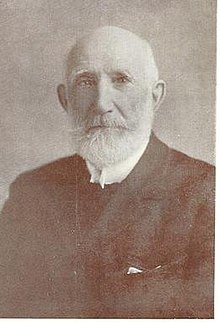
Summary
Edward Mann Langley (22 January 1851 – 9 June 1933) was a British mathematician, author of mathematical textbooks and founder of the Mathematical Gazette.[1][2] He created the mathematical problem known as Langley’s Adventitious Angles.[3][4]
Edward Mann Langley | |
|---|---|
 Edward Mann Langley | |
| Born | 22 January 1851 |
| Died | 9 June 1933 (aged 82) |
| Nationality | British |
| Education | Bedford Modern School |
| Alma mater | University of London Trinity College, Cambridge |
| Known for | Founder of the Mathematical Gazette Author of Mathematical Text Books Langley’s Adventitious Angles |
Biography edit
Langley was born in Buckden on 22 January 1851. He was educated at Bedford Modern School,[5] the University of London and Trinity College, Cambridge where he was eleventh Wrangler (1878).[6] After Cambridge, Langley taught mathematics at Bedford Modern School (1878-1918) where he wrote numerous mathematical text books and his pupils included the famous future mathematician Eric Temple Bell.[7] Langley became Secretary of the Mathematical Association (1885-1893), founded the Mathematical Gazette (1894) and became its editor (1894–95).[6][8]
In addition to mathematics, EM Langley was a notable botanist and a cultivated blackberry was named Edward Langley in his honour.[7]
Langley died in Bedford on 9 June 1933.[7] His former Bedford Modern School pupil, the mathematician Eric Temple Bell, contributed to his obituary in the Mathematical Gazette stating 'Every detail of his vigorous, magnetic personality is as vivid today as it was on the afternoon I first saw him'.[7]
Selected works edit
- The Harpur Euclid : an edition of Euclid's elements revised in accordance with the reports of the Cambridge Board of Mathematical Studies and the Oxford Board of the Faculty of Natural Science / by Edward M. Langley and W. Seys Phillips. Books I - IV. London; New York; Bombay : Longman's, Green, and Co., 1896.[9]
- A treatise on computation. An account of the chief methods for contracting and abbreviating arithmetical calculations. Published London and New York, by Longmans Green & Co, 1910[10]
References edit
- ^ Obituary: Edward Mann Langley, by E. T. Bell and J. P. Kirkman, The Mathematical Gazette Vol. 17, No. 225 (Oct., 1933), pp. 225-229
- ^ The Changing Shape of Geometry: Celebrating a Century of Geometry and Geometry Teaching, by Chris Pritchard, Cambridge University Press, 2003
- ^ Langley, E. M. "Problem 644." Mathematical Gazette, 11: 173, 1922
- ^ The Universal Book of Mathematics: From Abracadabra to Zeno's Paradoxes by David Darling. Published by John Wiley & Sons, 2004
- ^ Underwood, Andrew (1981). Bedford Modern School of the black & red. Bedford Modern School. ISBN 9780950760803. OCLC 16558393.
- ^ a b Cambridge University Alumni, 1261-1900
- ^ a b c d The Mathematical Gazette, October 1933
- ^ Flood, Raymond; Rice, Adrian; Wilson, Robin, eds. (2011). Mathematics in Victorian Britain. Oxford University Press. p. 171. ISBN 978-0-19-162794-1.
- ^ Langley, Edward Mann; Phillips, W. Seys (7 February 1890). "The Harpur Euclid: An Edition of Euclid's Elements". Rivingtons – via Google Books.
- ^ Langley, Edward M (8 April 1910). A treatise on computation. An account of the chief methods for contracting and abbreviating arithmetical calculations. Longmans, Green, and Co. OCLC 36523992 – via Open WorldCat.
External links edit
- Works by or about Edward Mann Langley at Internet Archive


